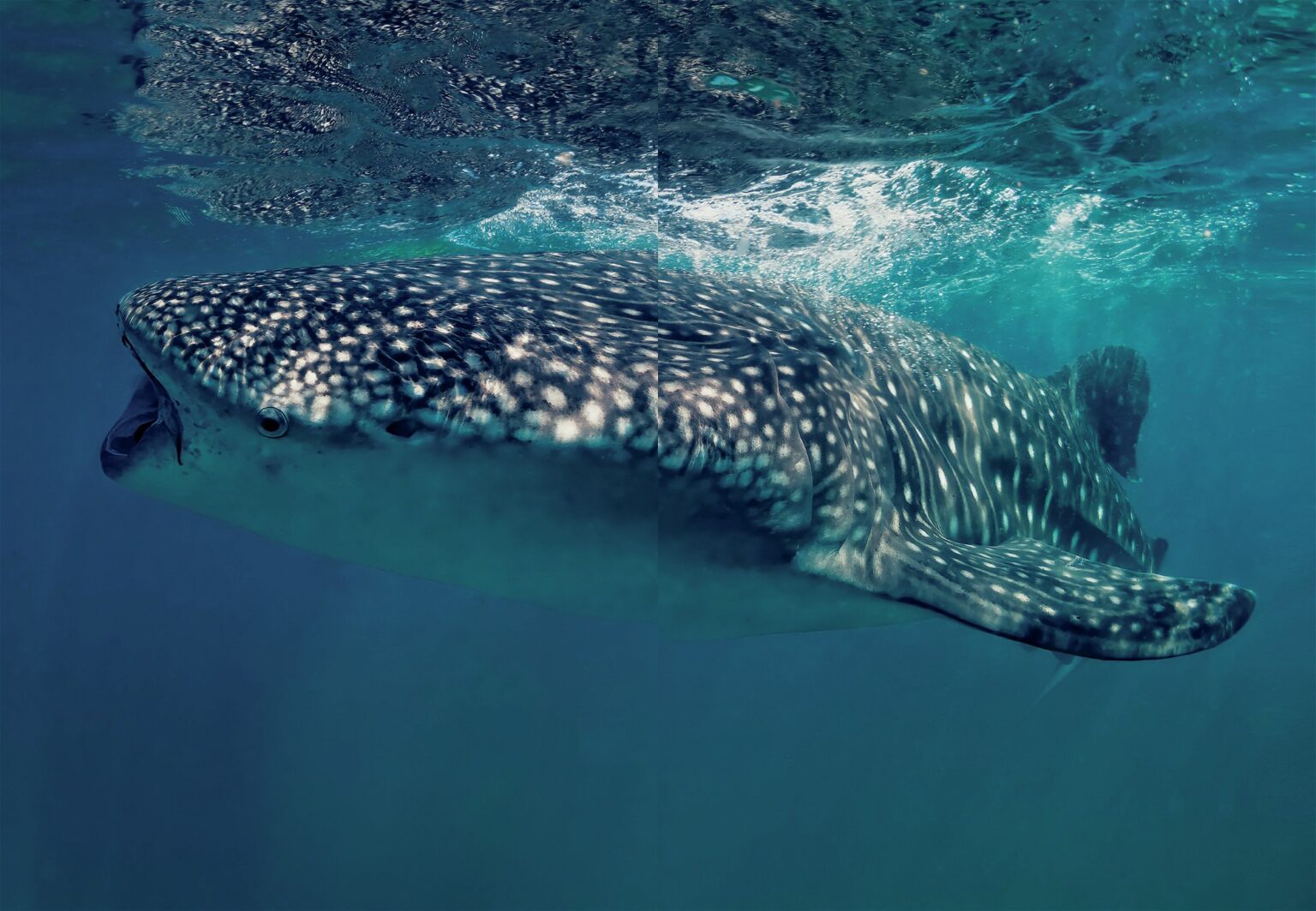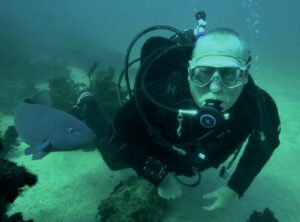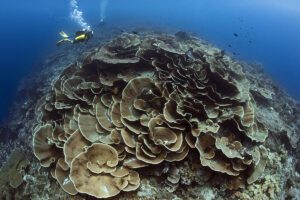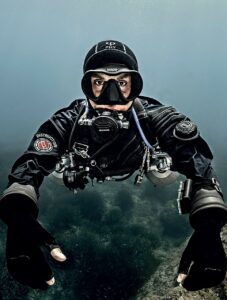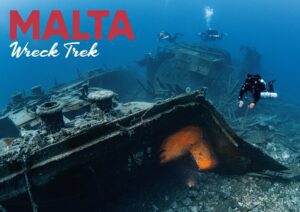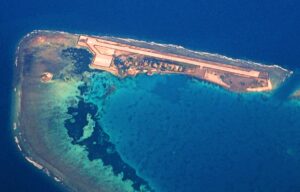Don Silcock is left in awe by the majestic pelagics which can be found off Mozambique, including whalesharks and manta rays.
On the south-eastern seaboard of Africa, along a 200km stretch of the Mozambique coastline, Mother Nature has conspired to create what can only really be described as the perfect underwater biological storm.
The Convergence of Ocean Currents and Zooplankton Abundance
For it is in this remote area that several major African and Indian Ocean currents converge, producing unique counter-cyclic eddies that suck rich nutrients up from the deep trenches to the south, creating huge quantities of zooplankton – the life source of oceanic megafauna.
Whalesharks and Manta Rays: Apex of the Mega Fauna Food Chain
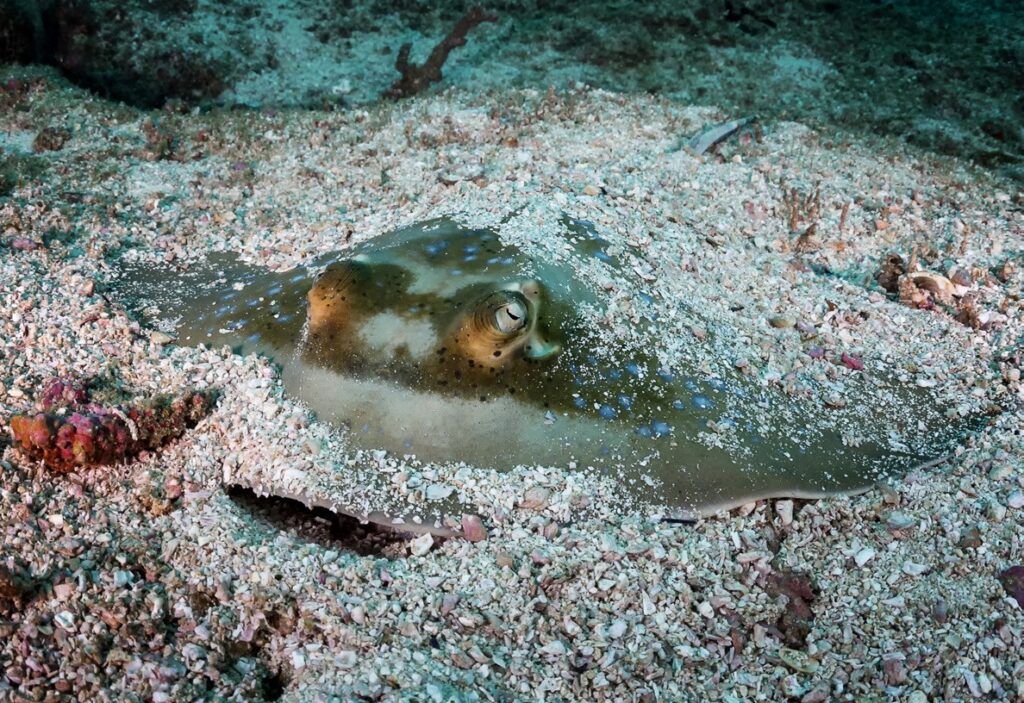
This unique mechanism has been occurring largely unnoticed for thousands of years and has undoubtedly played a major role in the evolution of the whaleshark and the manta ray, two creatures at the tip of the mega fauna food chain.
The Hidden Treasure of Mozambique's Coastline
At its peak, the area, in the southern Mozambique province of Inhambane, has been estimated to host some 20% of the world’s whalesharks and 1,400 individual manta rays – one of the largest such populations identified anywhere in the world.
It is also the location of numerous vibrant reefs and marine ecosystems that flourish on these rich nutrients.
The Rise of Marine Tourism in Southern Mozambique
Ironically in recent times it was one of the scourges of Africa – tribal warfare, which descended into the protracted and very bloody Mozambique civil war – that kept this unique natural phenomenon hidden from the world.
But times have changed, and peace has largely returned to Mozambique, but with it has come other threats that are having a significant impact on this unique marine mega fauna aggregation and threaten its very survival.
Mega Fauna Aggregations
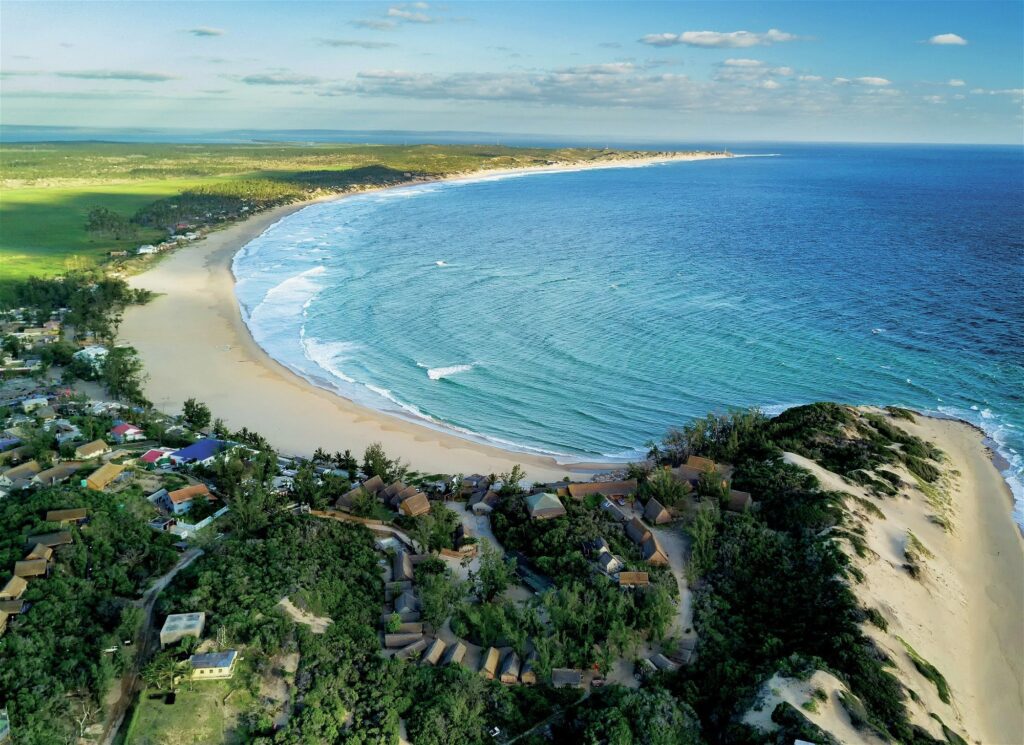
Aggregations of marine creatures happen when a combination of natural circumstances create the ideal conditions for large groups of fish or mammals to gather at a specific geographical location.
Many, such as South Africa’s Sardine Run, South Australia’s giant cuttlefish or Tonga’s humpback whales, are very well known, while others are still being discovered. But they typically all have the common denominator of seasonal influences creating the pre-conditions for the aggregation to happen.
In other words, it happens once or maybe twice a year, for a limited time only, and the creatures that aggregate are basically ‘hard-wired’ to make their way to the location as they sense the pre-conditions developing.
For example, each year at Ningaloo Reef in northwestern Australia, some seven to nine days after the March or April full moon, a massive coral spawning attracts large numbers of whalesharks that stay in the area for two to three months to feed on the resultant zooplankton.
But in southern Mozambique the unique counter-cyclic eddies produce a rich year-round source of zooplankton, which is concentrated in a 200km stretch of coastline from Zavora in the south to Pomene in the north. The reliable availability of such a rich food source makes the Tofo area an extremely important one to marine mega fauna.
Praia Do Tofo
The small beachside village of Tofo, situated in a picturesque bay about 16kms from the regional center of Inhambane city, has become the epicenter for the large numbers of tourists visiting the area to experience first-hand the megafauna and the pristine reefs of the area.
Several dive centres have set up shop and numerous guesthouses and small hotels have opened to accommodate the influx of tourists – all very positive in a poor country desperate for growth. Tofo also become the base for some groundbreaking research into both manta rays and whalesharks with some quite amazing things are being discovered about these wonderful creatures.
Studying and Conserving the Unique Biodiversity with Dr. Andrea Marshall and Dr. Simon Pierce
Marine scientists Dr Andrea Marshall and Dr Simon Pierce have led the research, with Marshall focused on manta rays and Pierce on whalesharks. Together in 2008 they created the Tofo-based Foundation for the Protection of Marine Megafauna and have worked tirelessly to understand, document and conserve the unique biodiversity of southern Mozambique.
Manta Cleaning Stations: An Intricate Symbiosis
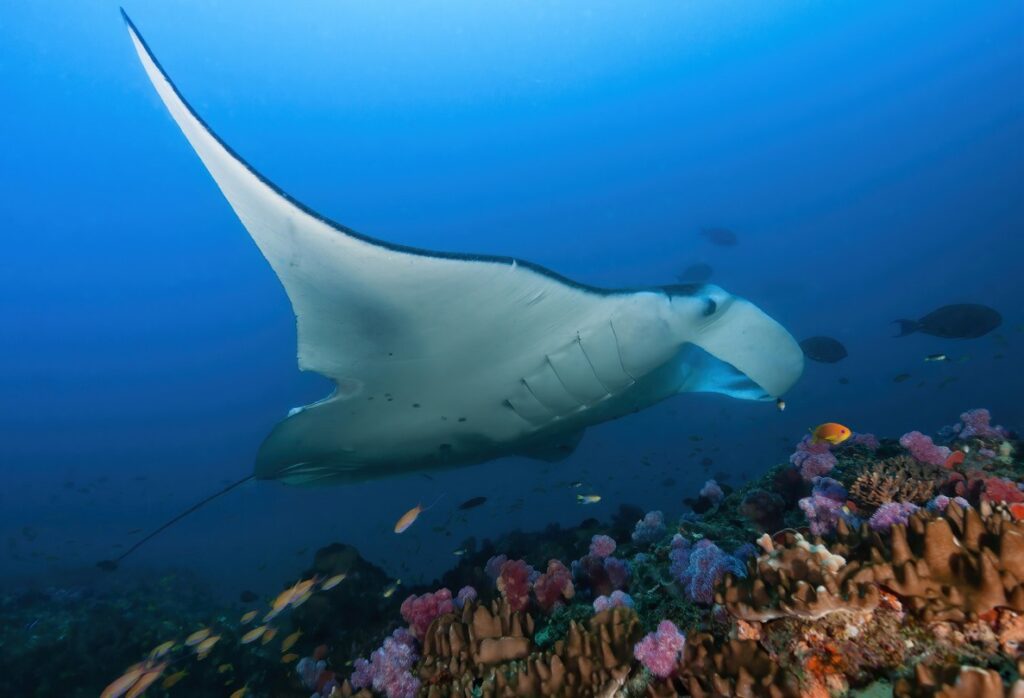
Large marine creatures inevitably suffer from significant numbers of tiny parasites which can be very difficult for to remove and breaching is thought to be a form of shock treatment used to shake them free. And just as large reef fish and moray eels develop relationships with smaller creatures and allow them to feed on their parasites under a temporary truce in the eternal cycle of hunt and eat, so do mantas frequent specific locations where they hover while cleaner fish perform a similar routine.
Manta cleaning stations are the perfect place to see these magnificent creatures as they hang loose and allow the parasites to be removed. However, it is unusual for individual mantas to remain around a cleaning station for much more than an hour.
But in the Tofo area the mantas will often remain for several hours at a time, because not only are parasites being removed, the rotting flesh on the shark bites is also eaten by the cleaner fish. In much the same way as leeches and maggots were used on humans prior to the discovery of penicillin! Interestingly Andrea Marshall has noted that different types of cleaner fish service different parts of the mantas. With sergeant majors cleaning the manta’s mouths, cleaner wrasse doing the honours on the gills and butterflyfish providing the wound management treatment…
Tofo's Whaleshark Population: A Haven for Juveniles
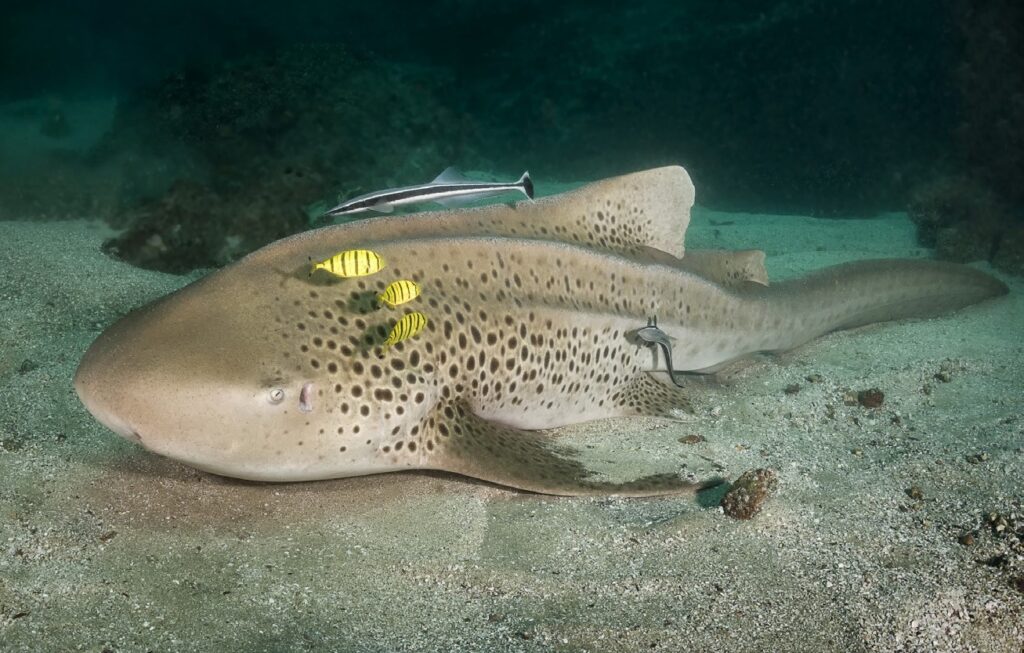
The biggest fish in the sea are almost a constant fixture in the Tofo area, drawn as they are by the availability of zooplankton. Whalesharks can reach almost 20 metres in length and 19 tons in weight by the time they reach full maturity at about 30 years old, but such giants of the sea are rarely if ever seen in the Tofo area.
Instead, research by Dr Simon Pierce has established that the area is dominated with juveniles in the range from three to an impressive ten metres.
Simon, a Kiwi marine biologist who readily admits he had never seen a whaleshark before arriving in Tofo in 2005, has established an equally impressive database to Andrea Marshall’s manta rays. This data, together with aerial surveys by South Africa’s Natal Shark Board has shown that there is a very high concentration of whalesharks in the Tofo area of around 3 per square km, which means around 70-80 of them at a time.

Did you know?
Diving in Mozambique is nothing short of spectacular and can easily be named as one of the largest marine life capitals of the world. Whales and whalesharks are common here, migrating through the Mozambique Channel, as are dolphins, manta rays, reef sharks and turtles.
Don Silcock
In more normal times Don is based in Bali, but is currently hunkered down in Sydney enjoying Australia diving. His website has extensive location guides, articles and images on some of the best diving locations in the Indo-Pacific region and ‘big animal’ experiences globally. IndoPacificImages.
Conservation Challenges and the Fight Against Poaching
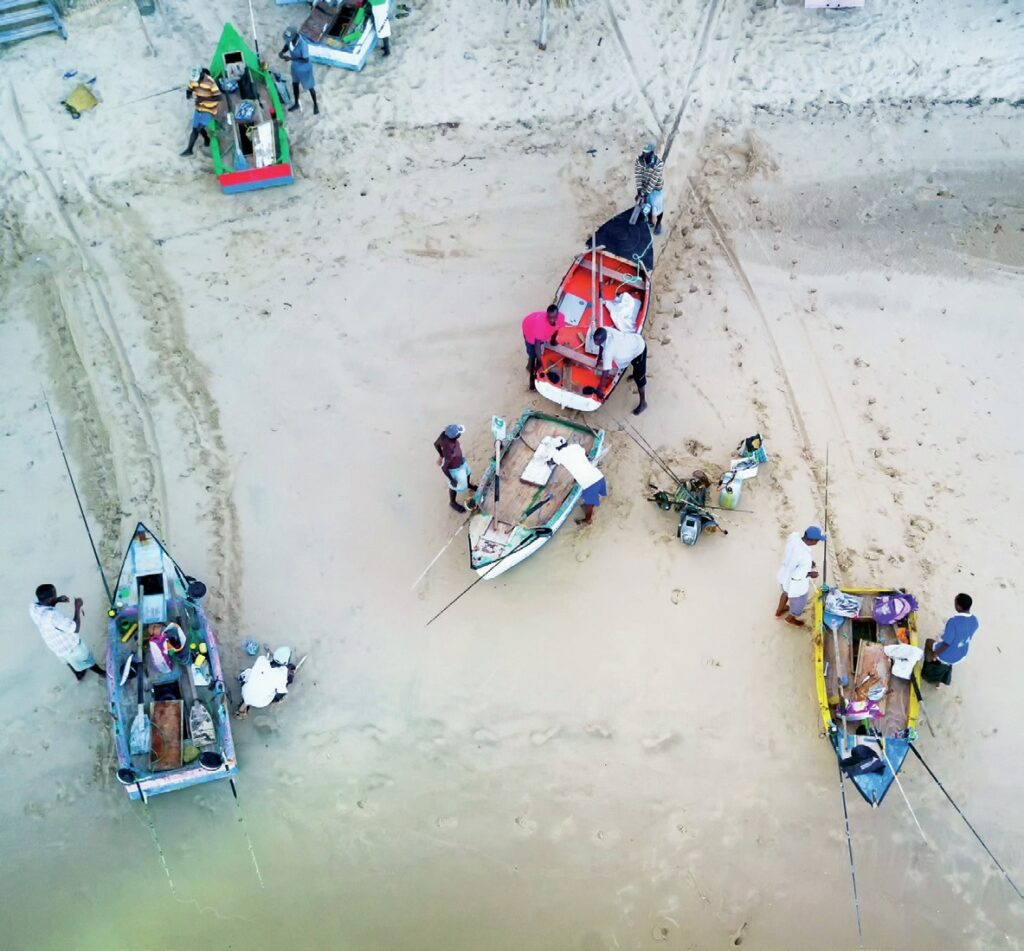
The obvious benefit of having such intensive and regular research in a megafauna hotspot like Tofo is that over time a clear picture starts to emerge about the overall health and vibrancy of its star attractions.
Unfortunately, around 2010 clear indications emerged of a possible decline in the populations of both the whalesharks and manta rays. Initially, though it was not clear if the decrease was real, or just a reduction in their ‘sightability’ at the usual locations. Of significant concern however was the strong demand from locally based Chinese ‘businessmen’ for shark fins and manta ray gills, which they were exporting back to China. That demand had led to local fishermen adopting the use of non-traditional and very destructive long line and net fishing, which was suspected to be a major factor in the apparent population declines.
The Impact of New Fishing Laws on Tofo's Marine Life
Since those early indications, the MMF team in Tofo worked very hard to quantify the actual impact and the resulting data has been integral to the case submitted to the Mozambiquan government over recent years.
The dramatic declines established in the numbers of manta rays, mobula rays and whalesharks was presented in terms of the economic impact to both the local tourism and fishing industries. That study, led by Australian Dr Stephanie Venables, a senior scientist at MMF, quantified the economic impact of the loss of manta ray tourism in Inhambane province at between US$16-$25m!
MMF’s engagement with the various Mozambiquan departments has been a long and difficult journey, but on 8 January, 2021 the government announced a new commercial fishing law which provides broad protection for several threatened species, including whalesharks, manta rays, and all mobula species.
Tofo – in summary…
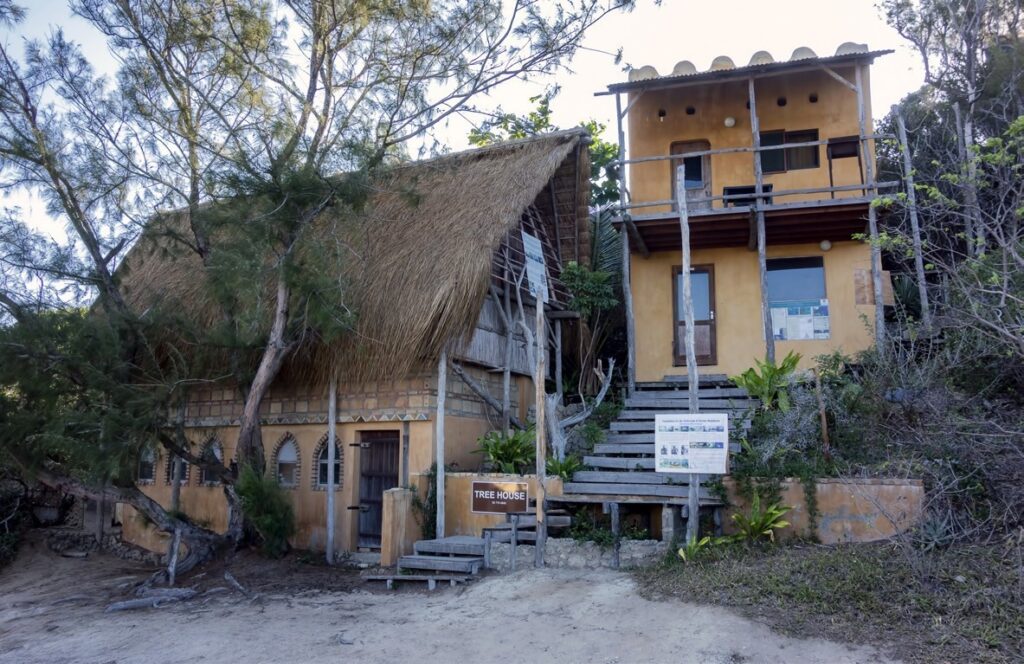
My first visit to Tofo was in 2010 and all the whaleshark and manta ray images in this article were taken on that trip. I went back in 2017 at the same time of year, but there were clearly less megafauna to be seen. Given the impact the global pandemic has had on tourism in Tofo in 2020/2021 and will have in 2022, combined with the new fishing laws, I am looking at getting back there next year.
This article was originally published in Scuba Diver ANZ #52.
Subscribe digitally and read more great stories like this from anywhere in the world in a mobile-friendly format. Link to the article
